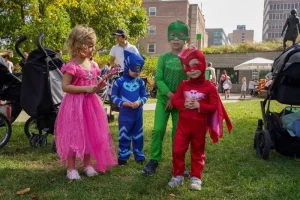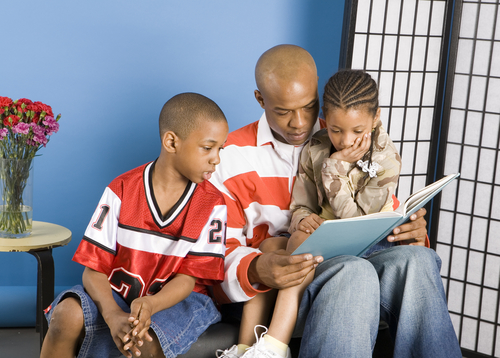
A video of daycare workers terrifying toddlers as they chased them while wearing a frightening mask made the rounds on the evening news last week. They were arrested and charged with child abuse. These staffers may have thought Halloween made this behavior acceptable, but decades of science have taught us that terrorizing child is a form of psychological maltreatment, and like other types of child abuse it harms a child in many ways, especially by disrupting their relationship with the adults they desperately need to trust.
While this case is extreme, it’s far from the only time adults have decided to have Halloween fun at the expense of children. Celebrities like Jimmy Kimmel urge parents to prank their kids at Halloween and submit videos of the children in distress. “We’re seeing increasing instances of parents and caretakers perpetrating different kinds of psychological maltreatment and posting it on social media,often to a strong positive response,” Amy Baker, an expert on psychological maltreatment and member of The Psychological Maltreatment Alliance board, told me.
Clearly, parents need to understand more about how these behaviors affect their children.
The most important developmental task for preschoolers is to learn that the world is safe, and their grown-ups are there to protect and support them. Developing trust is a critical building block to both curiosity and independence, which are key attributes of successful adults. But the damage of psychological maltreatment is a form of trauma that can have lifelong health effects, according to a field of research focused on how adverse experiences during childhood affect our health as adults.
How can you judge what is OK during the Halloween fright season? We can turn to developmental psychology as a guide. Infants are just learning to trust, but are often startled by new faces, noises – and certainly a scary mask. Toddlers and preschoolers, like the children seen in the day-care center video, are learning autonomy. Pre-schoolers are developing independence. Frightening a child in a way that causes them to doubt their own perceptions of reality can interfere with these key developmental tasks and may do lasting harm. When the perpetrator is a caretaker, it can disrupt bonding, another key element of healthy development. Developmental psychologists believe children must complete one phase of development before being able to fully move on to the next; a trauma, especially perpetrated by a trusted caregiver, can be a roadblock to completing a developmental phase.
Older children may be better able to discern whether a masked person is a real threat. But there is never a good age for a parent or caretaker to prank a child.Fooling older children who are learning to be more independent and finding their internal compass may make them feel stupid and ashamed both for being scared and for not seeing through the ruse. These are very strong emotions and are magnified when caused by a trusted parent or caregiver.
So does that mean Halloween is canceled? Celebrate the Halloween season by starting off any activity with younger children by clearly asking the child if they’re ready to play ‘make believe’. If the answer is no, don’t do it. For kids of any age, ask how they would like to observe Halloween and make a plan with the following points in mind:
- If you decide together to visit a haunted house or similar holiday attraction, maintain your role as the safe person for your child. Hang on to their hand and do not join the cast of characters in efforts to scare your child.
- Involve your child in making age-appropriate decisions. Make sure you are recognizable to your child if you dress up. Keep the infant’s involvement to a cute attire like a onesie or cap. Include toddlers and preschoolers in making costumes or masks together.
- Remember how quickly school aged kids and adolescents feel deep shame or humiliation if they feel they’ve been duped. Research has shown that humiliation can be just as damaging as physical abuse.
Most of all – remember how critical it is that our kids truly be able to trust their beloved caretakers so they can grow into loving and trustworthy adults.
Janet Rosenzweig is an author, educator and researcher who has worked in child welfare for more than four decades. She is a Senior Policy Analyst with The Institute for Human services, teaches at The University of Pennsylvania, and is a member of the Research Committee of The Psychological Maltreatment Alliance.
THIS POST ORIGIONALLY APPEARED IN THE PHILADELPHIA INQUIRER, OCTOBER 2022

